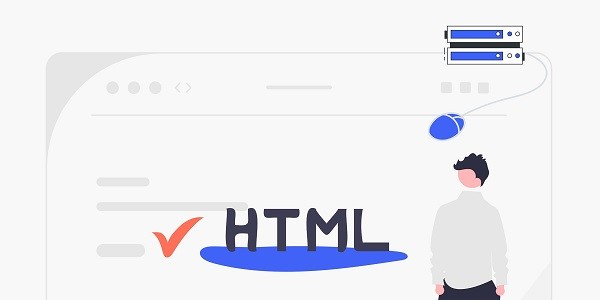In-depth analysis of the technological innovations of mainstream browsers in 2025, from privacy security, AI assistants to Web3.0 support, exploring how browsers reshape digital experiences and revealing how IP2world proxy services optimize global access performance. The core competitive dimensions of browsers in 2025In the context of quantum computing, edge networks, and AI, the evaluation criteria for browsers have shifted from basic performance to composite capabilities:Privacy and security: block trackers by default, force HTTPS upgrade, and encrypt local data;AI native support: built-in intelligent assistant, context-aware content generation, and automated operations;Cross-ecosystem integration: seamlessly connect mobile phones, PCs, XR devices and IoT terminals;Web3.0 adaptation: native wallet integration, decentralized storage protocol support;Energy efficiency management: optimize memory usage and extend the battery life of mobile devices. Technology comparison of the leading browsers in 20251. Chrome Quantum 2025 (Google)Core advantages:Equipped with the Blink 2.0 engine, page loading speed is 300% faster than in 2023;Deep integration of Gemini AI to support real-time speech translation and code generation;The world's first to support the WebGPU 2.0 standard, unlocking browser-side 3D rendering and machine learning.Applicable scenarios: developer tool chain, cloud computing platform access, and multi-label heavy users.2. Firefox Horizon (Mozilla)Revolutionary Innovation:Distributed identity system (DID), completely replacing traditional cookies;Privacy Sandbox Pro+: Automatically obfuscates digital fingerprints to prevent advanced tracking;Driven by the open source community, it supports plugin-level security audits.User positioning: privacy-sensitive groups, open source technology advocates, and antitrust supporters.3. Edge Copilot (Microsoft)AI Fusion Examples:Deeply bundled with Windows 12 AI Assistant, it can perform complex tasks across applications (such as automatically filling out forms and generating meeting minutes);Enterprise-level security suite: dynamically isolate high-risk pages and scan malicious scripts in real time;Exclusive Azure CDN acceleration, access speed in Asia Pacific region is 15% faster than that of competing products.Best practices: Enterprise office scenarios, Microsoft 365 ecosystem users.4. Safari Vision (Apple)Eco-friendly collaborative design:Native support for Vision Pro spatial computing to enable 3D web page interaction;Neural engine optimization: memory usage is reduced by 40% on the M3 chip;WebKit Privacy Shield: Enforce restrictions on cross-site data sharing.Core users: Apple hardware family users and AR/VR content developers.5. Brave NexusWeb3.0 Pioneers:Built-in IPFS node, direct access to decentralized content;BAT 2.0 token system: users earn income through browsing behavior;Zero-knowledge proof identity authentication, anonymous participation in DAO governance.Innovative value: cryptocurrency users, decentralized application developers. The synergy between browser and proxy serviceIP2world's proxy IP service can solve the network bottlenecks faced by browsers in a targeted manner:Breaking through geographical restrictions:Bind specific country IPs (such as the United States and Japan) through static ISP proxies to unlock region-specific features (such as Edge Copilot's localized AI services);Dynamic residential proxies simulate real user locations, preventing browser fingerprints from being identified as proxy traffic.Performance optimization:Exclusive data center proxy provides low-latency dedicated lines, improving Chrome Quantum's WebGPU rendering efficiency;The S5 proxy implements multi-entry load balancing and accelerates the loading of IPFS content on Brave Nexus.Security reinforcement:Proxy traffic encryption tunnel protects Safari Vision’s spatial computing data transmission;Unlimited server plans support 24/7 enterprise-level security audits. Prediction of future browser technology trendsEdge rendering: Browsers will rely on distributed proxy nodes (such as IP2world global servers) to render nearby content;AI personalization: Dynamic compilation of the browser kernel based on user behavior data to achieve "one thousand faces for one thousand people" performance configuration;Protocol fusion: QUIC, HTTP/4 and proxy protocols (such as SOCKS5 over TLS) are deeply integrated to reconstruct the transport layer logic. ConclusionThe browser in 2025 has surpassed its original positioning as a "web browser" and evolved into an intelligent hub connecting the physical and digital worlds. Whether it is a developer, enterprise or ordinary user, the decision to choose a browser needs to be based on the adaptability of the technology stack, privacy requirements and cross-platform experience.As a professional proxy IP service provider, IP2world provides a variety of high-quality proxy IP products, including dynamic residential proxy, static ISP proxy, exclusive data center proxy, S5 proxy and unlimited servers, suitable for a variety of application scenarios. If you are looking for a reliable proxy IP service, welcome to visit IP2world official website for more details.
2025-03-28









